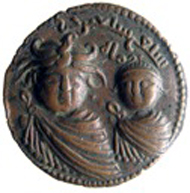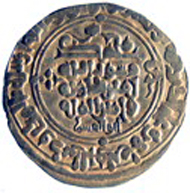June 7, 2012 – The First Webinar for Islamic Numismatics was initiated at Hamburg University this summer term. Twelve students in six countries meet every Friday at 2 pm CET in a classroom with their professor Stefan Heidemann in cyber space while sitting in front of a screen in Hamburg, Leipzig, Leiden, Salamanca (Spain), Rome, Fayyoum (Egypt), Cairo and Jerusalem (the technical infrastructure is supported by the German Research Foundation, DFG).
At the beginning of each class everybody says hello and speaks about whatever s/he has on having on her/his mind, to warm up and create a classroom feeling to bridge the gap of thousands of kilometres and different time zones. As in any other classroom, the twelve students and their professor can see and talk to each other, and they have a white board at hand and give their own presentations. The PowerPoint-supported lecture is transmitted on everybody’s screen and lively discussions arise.
Technically a sophisticated conference and teaching platform is running parallel with a different audio or internet telephone connection. Working with two independent systems has the advantage that if one system crashes the student in Hamburg or Fayyoum is not completely cut off. The innovation lies not so much in the technology, but in the readily available run-of-the mill equipment at hand in Fayyoum, Salamanca or Leiden.
The advanced and highly motivated students of the webinar meet here possibly for the first time their future academic colleagues on an international level and forge bonds which will support future research. The topics of the classes explore definition and terminology, production and organization of a mint, coins as a means of economic exchange, coins in an Islamic legal context, history of coinage and economy in the Middle East, reading and analysing of coins from different periods, and archaeological coin finds and their interpretation.
In the past years it has become obvious that the study of Islamic coins for further economic, political, archaeological and material understanding of the Middle East, is as important as an independent and parallel source as literary evidence, especially in the period before 1500 where we almost do not have sufficient archival resources. Islamic numismatics is thus part of the current “material turn” in humanities. Working with such a material source, which is not easily accessible – methodologically and physically – requires a clear idea about the research objectives, and an interest in working with objects. Knowledge about Islamic coins and its possibilities for various research, however, is thinly spread. In most cases guidance in the field is not easily available at the university.
The new webinar offers a venue for introducing historians and archaeologists of the Middle East to the issues of working with Islamic coins and coins finds. The webinar was internationally advertised. In order to take part, students had to submit an application and to pass an interview. The model for this innovative form of teaching is the web-class on Arabic papyrology offered by Andreas Kaplony at the Ludwig-Maximilians-Universität in Munich.
Why Islamic coins so important for historians? They are the most prolific epigraphic sources for the history of the Middle East pre 1500. This sets them apart from coins of classical antiquity and Christian dominated Europe, where the image plays the major role. Islamic coins as bearers of texts – there can be up to 150 words on one coin – are unique as source material in the history of civilization. They are in fact a condensed form of text document which needs to be deciphered in various ways, serving different fields such as politics, economics, industry, society and law, Islamic art and material culture, and metallurgy.
Further information on Stefan Heidemann are available in his profile on the website of Hamburg University.






